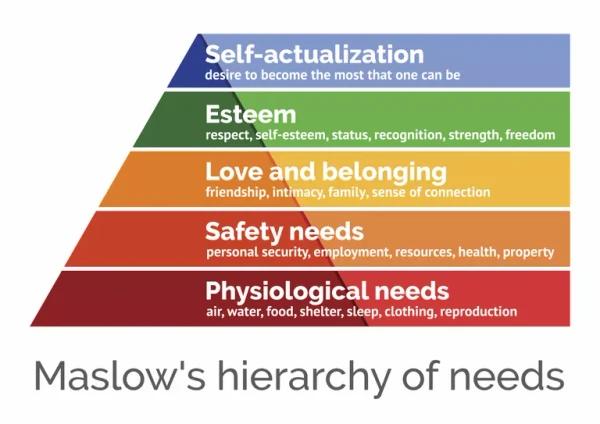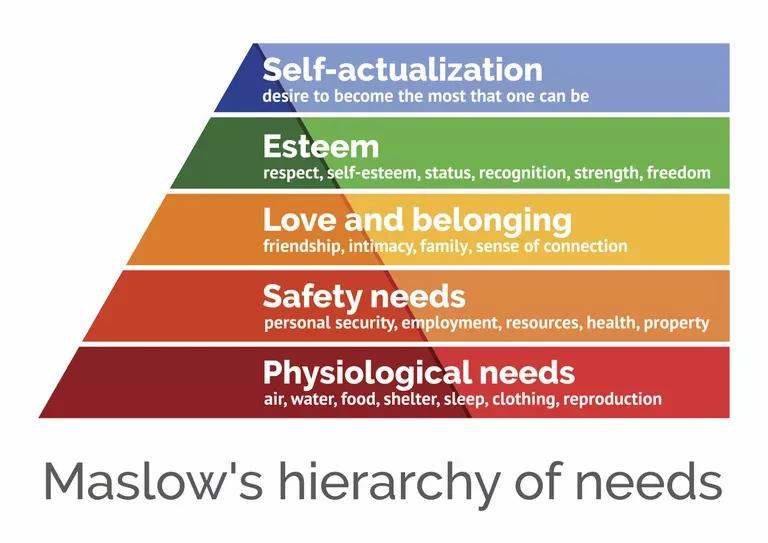Maslow's Hierarchy of Needs Explained
Curated from: thoughtco.com
Ideas, facts & insights covering these topics:
3 ideas
·590 reads
17
Explore the World's Best Ideas
Join today and uncover 100+ curated journeys from 50+ topics. Unlock access to our mobile app with extensive features.
Maslow's hierarchy of needs
Maslow's hierarchy of needs states that people are motivated by five basic categories of needs:
- Physiological refers to basic physical needs like drinking when thirsty or eating when hungry.
- Safety needs are seen in childhood, as children have a need for safe and predictable enivonments and may react with fear or anxiety when these are not met.
- Love and belonging. Feeling loved and accepted by family and friends and social circles.
- Esteem involves our desire to feel self-confident and good about ourselves.
- Self-actualisation refers to feeling fulfilled or living up to our potential.
20
213 reads
How people progress through the hierarchy of needs
- Maslow believed having things like freedom of expression or a just society makes it easier for people to achieve their needs.
- Maslow also said a learning environment helps to better understand the world around us.
- Maslow acknowledges that people don't have to satisfy one need completely to move to the next need. Instead, most people tend to have each of their needs partly met.
- One behaviour might meet two or more needs. For example, sharing a meal with someone meets the physiological need for food and the need for belonging.
21
200 reads
Testing Maslow's theory
Maslow's idea that we go through five specific stages hasn't always been supported by research.
In a 2011 study of human needs across cultures, researchers found that meeting six needs was linked to well-being: Basic needs (similar to Maslow's physiological needs), safety, love, pride and respect (similar to esteem needs), mastery, and autonomy.
However, the order in which people go through these steps is not a strict rule. For example, people living in poverty might struggle to meet their needs for food and safety but feel loved and supported.
20
177 reads
IDEAS CURATED BY
Shannon Klein's ideas are part of this journey:
Learn more about motivationandinspiration with this collection
How to handle conflicts
How to identify and regulate emotions
How to develop self-awareness
Related collections
Similar ideas
1 idea
Maslow's Hierarchy of Needs Explained
thoughtco.com
9 ideas
How Maslow's Hierarchy of Needs Explains Human Motivation
verywellmind.com
21 ideas
10 Common Traits Of Self-Actualized People
bigthink.com
Read & Learn
20x Faster
without
deepstash
with
deepstash
with
deepstash
Personalized microlearning
—
100+ Learning Journeys
—
Access to 200,000+ ideas
—
Access to the mobile app
—
Unlimited idea saving
—
—
Unlimited history
—
—
Unlimited listening to ideas
—
—
Downloading & offline access
—
—
Supercharge your mind with one idea per day
Enter your email and spend 1 minute every day to learn something new.
I agree to receive email updates


